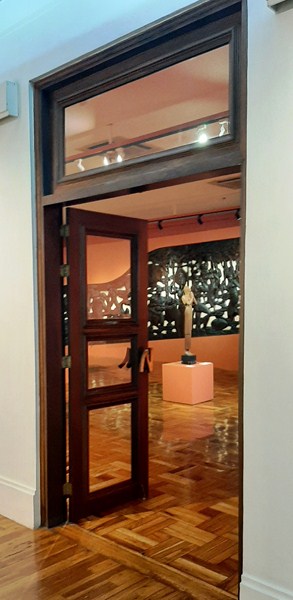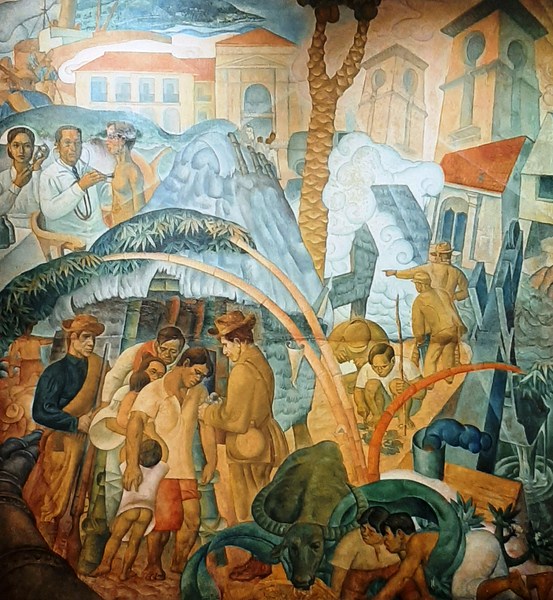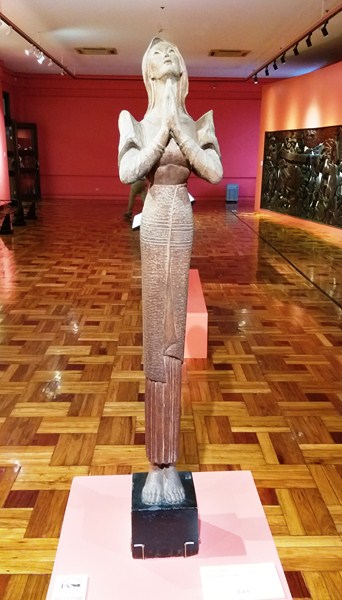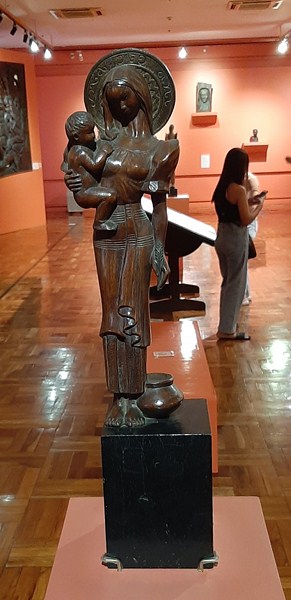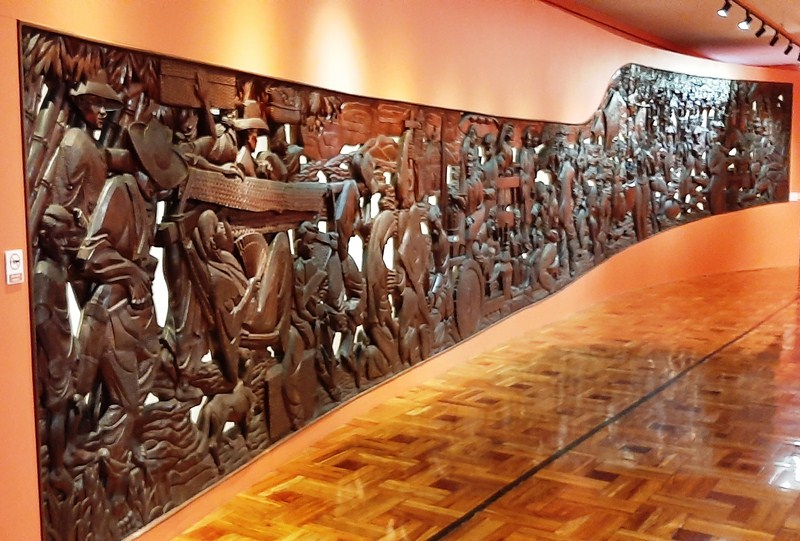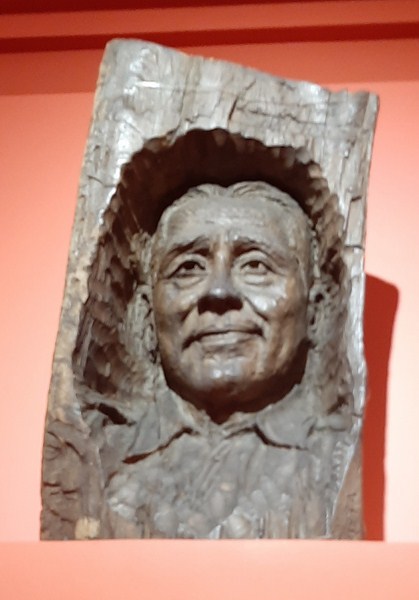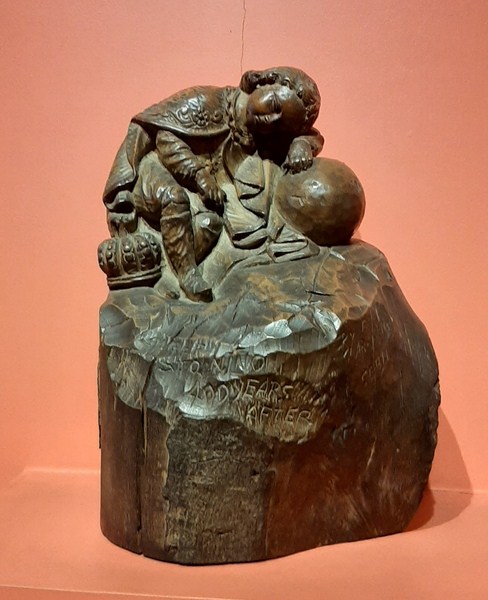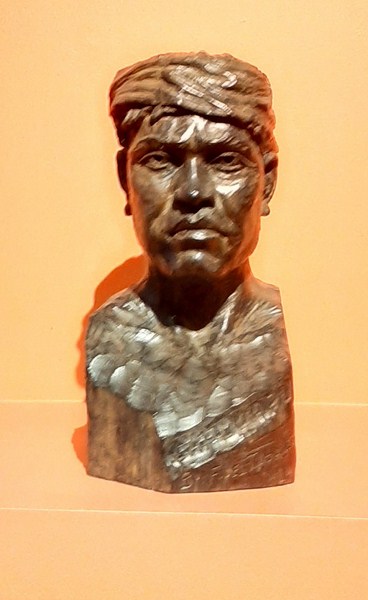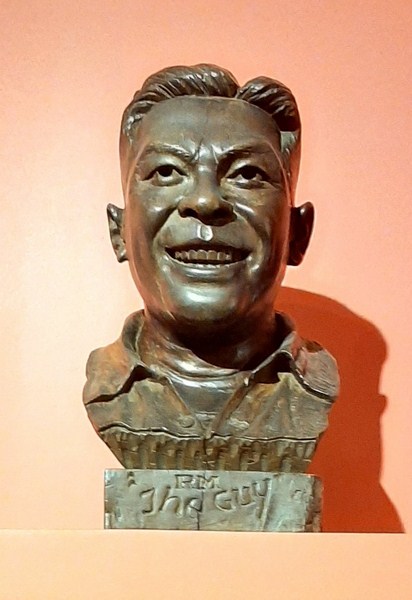Gallery XVI, a permanent exhibit at the third floor of the National Museum of Fine Arts, is dedicated to “The Progress of Medicine in the Philippines” (Pag-unlad ng Panggagamot sa Pilipinas), a quadtych of four large-scale, oil on canvas paintings by celebrated muralist and National Artist for the Visual Arts (1973) Carlos “Botong” Francisco (1912-1969) that depicts the evolution of healing practices in the Philippines from the pre-colonial period tribal practices to the modern period.
Check out “National Museum of Fine Arts”
Especially commissioned in 1953 by Dr. Agerico Sison, then director of the Philippine General Hospital (PGH), these were once put on display at the entrance hall lobby. However, these paintings were constantly exposed to the elements, requiring them to undergo restoration. Eventually, they were moved to the National Museum. The panels were restored by Tomas Bernardo in 1974 and 1991 and by a team supervised by Orlando Abinion from 2006 to 2007.
Two high-quality reproductions of these paintings, created by photographer Benigno T. Tod III, are still on display at two sides of the PGH lobby. Declared as a National Cultural Treasure by the National Museum of the Philippines on September 21, 2011, these important works are on loan to the National Museum by the University of the Philippines to secure their preservation. Each painting measures 2.92 x 2.76 m. (9.71 x 8.92 ft.).
The first painting depicts a babaylan (female shaman), with arms uplifted, leading a healing ritual in Pre-Colonial Philippines. The second painting, illustrating the arrival of the Spaniards in the Philippines, features two monks, one holding a plant specimen in his right hand while the other monk is deep in study behind him. Both are surrounded by characters (manananggal, the falling bodies of “tormented and oppressed” people, a tortured child and a sorcerer holding a voodoo doll) representing superstitious beliefs and practices of the people.
The third painting, illustrating the American Occupation which brought a new focus on public health and sanitation, depicts two men hiding under a plant to avoid inoculation while a group of men are collecting dead rodents after fumigation. The fourth painting illustrates the distinguishing characteristics of modern medicine like surgery, radiation, medical devices, laboratory analysis and hospitals. The four panels are connected by common elements such as flora and clouds.
Across from Botong’s large-scale painting is “Philippine Folklore,” a large-scale wood relief series by renowned sculptor Jose P. Alcantara (1911-2005), done with the help of several hired and trained woodcarvers from Paete (Laguna), from the Philam Life Collection which was part of the right side of a 1,536 cm. (50-ft.) long (the length of the theater’s orchestra), multi-panel piece which was originally installed at the outside walls of the 780-seat Philam Life Auditorium (designed by National Artist for Architecture Carlos Arguelles) along U.N. Avenue, Ermita, Manila in 1961.
Declared as an “Important Cultural Property” by the National Museum of the Philippines on June 27, 2019, these narra wood reliefs depict various scenes that represent Filipino culture and traditions. On March 14, 2019, it was unveiled at Gallery XVI by the Philam Foundation. The wood carving shows a continuous scene depicting Filipino-Christians and Muslims doing their own festivities while staying connected to each other.
At the left side, huddled Christians are seen hearing mass inside a Baroque church. Cockfights and metal craftsmen at work are also depicted. Past the balangay at the center, the lifestyle shifts to festive Muslims showcasing their traditional dance and playing brass instruments.
At the center of the gallery are two prize-winning (Art Association of the Philippines) wooden sculptures of Jose P. Alcantara – Ina ng Lahi (Mother of the Race, 1951, narra wood), special prize (1951); and Ina ng Ani (Mother of Harvest, 1951), third prize winner (1954).
Mounted on a wall near the entrance are a five wooden sculptures – Sleepy Santo Nino 400 Years After (1965), made in commemoration of 400th anniversary of the arrival of Miguel Lopez de Legaspi in 1565, marking the beginning of Spanish colonization; President Sergio Osmena (1952), awarded first prize, in the woodcarving category, by the Art Association of the Philippines in 1952; Lapu Lapu (1953); The “Guy” (President Ramon Magsaysay, 1954); and “Ike” (US President Dwight D. Eisenhower, 1953), made in honor of the election of Eisenhower as 34th president of the U.S. in 1953, awarded first prize, in the woodcarving category, by the Art Association of the Philippines in 1953).
Gallery XVI: Philippine General Hospital Hall, 3/F, National Museum of Fine Arts (NMFA), Padre Burgos Avenue, Ermita, Manila 1000, Metro Manila. Tel: (632) 8527-1215 and (632) 8298-1100. Email: inquiry@nationalmuseum.gov.ph. Website: nationalmuseum.gov.ph. Open Tuesdays to Sundays, 9 AM – 4PM. Admission is free. Coordinates: 14°35′13″N 120°58′52″E.


